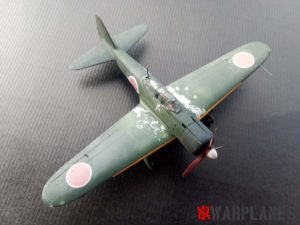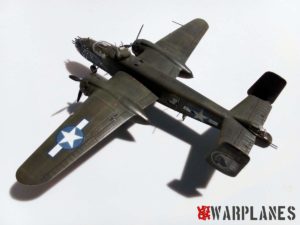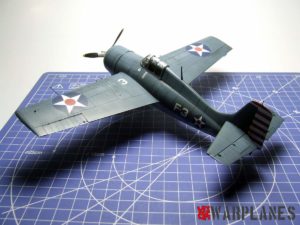Pantserwagen DAF M39
Late in 1936, in response of the rapidly deteriorating international situation, the Dutch government decided to speed up its recent modernization programme for the Dutch army. In view of the limited budget available and the priority placed upon the procurement of tanks, only fourteen Swedish-made Landsverk 180 armoured cars (M38 in Dutch service) were purchased to complement the existing twelve M36 (Landsverk 181). However, in order to reduce their dependency on foreign army suppliers, the Dutch called upon their own industry to come up with a more modern armoured car. Truck manufacturer DAF had been toying with the design of an armoured car, based on their hugely successful Trado suspension system as early as 1935; their current design featured a rather advanced welded monocoque hull atop of which would sit a 37mm Bofors gun-equipped turret, still manufactured by Landsverk. The V8 Ford engine gave the vehicle a top speed of 75km/h. The secondary armament consisted of three 7.92mm Lewis MGs. A prototype was presented to the Dutch army in April 1938, but the order for an initial batch of twelve vehicles only materialized itself in November of that year. Furthermore, several factors delayed production: the steel plates, procured from Belgium, arrived late, the delivery of electrical equipment from Bosch in Germany stagnated after the outbreak of WWII, France halted the delivery of bullet-proof tyres, prismatic episcopes and visors on 1 September 1939…

The first M39 was not delivered until late November 1939, the twelfth on 5th January 1940. However, none were equipped with their weapons nor had any visors and used normal truck tyres. Dutch-made visors were finally fitted, but cracks developed in the armour around the MG mount and had to be fixed. It was then hoped that the vehicles would be fully operational by September 1940. The German attack in May 1940 only found three M39 armoured cars ready to fight: they fought in the defence of Rotterdam. Two of them broke down and were destroyed by their crew on 11th of May, the third one, III-2203, after several skirmishes with the enemy was finally retired to The Hague on 14th on May, where at least five other M39s, some of them without their armament, had been used to patrol the city and respond to Fifth column “threats”. The Germans were quick in re-using the M39s they found: 4 were added to the reconnaissance battalion on the 227th Infantry Division on 15 May. During the same campaign, four other were impressedinto the 225th Infantry Division. They became known as Panzerspahwagen DAF 201(h). The 227.ID’s M39 were seen in France in late May 1940, and later in Belgium, and were at some stage refurbished by DAF and given radio equipment. They then found their way to the opening stages of Operation Barbarossa, on the Northern front, and disappeared over the following two years, probably due to lack of spare parts. The fate of the vehicles pressed into service with 225.ID is unknown. The vehicles in Dutch servicewere green overall, but as realy as late May 1940 in France, the ones used by the Germans are reported to be “Panzer Grey”. Some more elaborate camouflage appear on some vehicles at a later date. After the war it was envisaged to restart the production to reequip the Dutch Army with 200 reconnaissance vehicles ; it seems that Belgium had some interrest for that vehicle too. But due to the cost of the project, and the low-cost of the British light tanks in surplus, the reconnaissance rule was given to light tanks.
The kit from Retrotracks: There is 35 parts (two are little parts to be used as spare parts only). The kit is finely molded in resin; the parts are well conceived and assembly will be easy. The doors can be placed in open position. The wheels are well detailed. The decals permits to build one Dutch or two German vehicles. German decals are really good, but Dutch ones will advantageously be replaced by other of better quality; or hand-painted with caches.
The fact that Belgium could have been equipped with some DAF M39 gived me the idea to build a “what-if”; so my build will represent a Belgian vehicle from the 2Cy (elite mechanized infantry unit: the “Black Devils”).
Lets go to the building himself: for a resin kit, no real problem. The most difficult thing was to remove the resin carrot under the chassis… With patience, result is fine. I built the chassis, keeping the turret and the wheels aside, for an easy painting stage. As always I used white as primer. Then I airbrushed the camo of that little DAF. As it is a “what-if”, I’ve decided to represent it with the Belgian khaki “mosterd” from 1940… I like it!
Belgian khaki 1940 =
40% Tamiya XF-49 kaki
40% Tamiya XF-59 Desert Yellow
10% XF-52 Flat Earth
10% orange yellow
Then I’ve painted the tyres with “Dark Rubber” from Panzer Aces and made some weathering with Model Master Rust with some drops of MM Gun Metal… And I’ve assembled the parts. Pébéo gloss varnish followed, with the application of the decals (that came from a DACO decal sheet for Belgian AFV’s). A new airbrushing of gloss varnish followed, then I made an oil wash with Abteilung 502 “Brown Wash”. Once dry, I airbrushed Pébéo matt varnish; then weathered the DAF with Tamiya pastels (I like that!) and turnet my attention onto the base…
In fact I hade the idea to present the DAF as a “museum guardian”: you can situate the scene in the actual period… I prepared a socle, inspiration came from the socle of the JPK90 of the Musée des Chasseurs à Pied, Charleroi, Belgium. The ground is from an Evergreen sheet, that I engraved to represent a court. Then, light gray was airbrushed; gloss varnish; oil wash; matt varnish and weathering with pastels. Some touches of grass were added.
OK, that was nice but uncomplete… The scene lacked of life. So I’ve added some plants; and my friend Domi sent me “civilians” and a cat! I decided to represent a family visiting the museum. Couple is looking to the AFV, but of course the daughter had her attention catched by a cat near the rear wheel! Painting of the figures was made with Vallejo and Citadel Colors acrylics, and they received a wash of Vallejo “Brown Glaze”.
Now the scene is looking good for me: you have a central element (the DAF); some life around it (visitors clothes are adding color touches to the scene) and a secondary element: the cat!
Conclusion: an easy build that brought great fun. If you’re familiar with resin, this is a piece of cake. If you’re not familiar with resin, this is THE kit to begin with.
My thanks to RetrokiT fot the review sample, and for the enthousiasm of Dominique Jadoul when I spoke him about a possible Belgian deco…
Daniel Clamot













